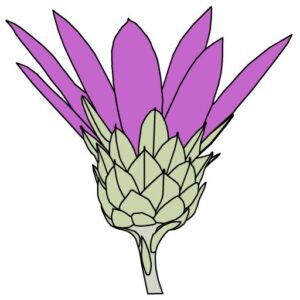Intro
„The Synecologist’s Flora“ ist the part of the website that contains contributions concerning plant species instead of plant communities, concepts or theoretical issues. With the latter being the emphasis of The Synecologist, the “Flora” comprises just a selection of species that are of special interest.
Rare and Overlooked Species | Relevant Floristic Findings
In the beginning the focus will lay on relevant floristic findings made by me and some colleagues. The main purpose at this stage is to raise awareness of these species, which often are interesting in themselves, by being much more common than believed, or which have been completely overlooked so far (in Austria or other/greater areas). Most of the regarding species are neophytes, but there are some remarkable indigenous ones included, too.
Key Species
These are species of special interest in other projects of the author like the Ceplac or TherMigs. They will be listed in the directory with a short note only and a link to the specific site discussing them. Since most of the key species are not generally distributed and many of them are spreading, there often are relevant floristic findings of these species, too.
Details Regarding the Findings
Unless otherwise stated, the findings collected here are made and identified by me alone. If with a relevant finding no related publication is mentioned, it is published here for the first and so far only time. Species belonging to the “findings” category often will be given a short entry in lists only, including the general location and year of the finding as well as an assessement of its floristic status. Detailed information may be provided later. In addition to the texts on The Synecologist, in some cases more detailed contributions have been published in the journal Neilreichia.
Because of my focus and limited capacities there are some restrictions to the dealing with relevant findings. Most of the species concerned are poorly known, so I spent a lot of work on their identification, using not only European literature but, if necessary, sources from their putative home countries, too. Please keep in mind that even in doing so often there will be a remainder of uncertainty. As a matter of fact, there are a lot of species out there nobody knows really well… In addition, quite often the question of the involvement of hybridisation is raised – a question that can’t always be answered by a field botanist. This means that taxa which show an overwhelming amount of one’s species characters will as a rule be treated as this species even if there is some doubt in it’s genetic constitution.
For organisational reasons, the additional time-consuming work of floristic documentation has to be reduced to the gathering of primitive vouchers, if necessary. There certainly are colleagues who can and will do that much better, and some of them already have done so. I also try to take a few informative pictures, some of which will successively be published on this website.
And I perform vegetation relevés whenever possible. This, again, is a key part of my work: we urgently need information on the socio-ecological behaviour of rare or otherwise poorly known species. It is, among other things, a crucial point in the assessment of their possible invasiveness. This data is eventually stored in a database.
For the same reason, I gather distribution data on these species and the respective vegetation types which is successively put into a geographic information system (GIS) which is linked to the relevé database.
Wanted (and Apprehended)
On this page a list of taxa will be set up that still raise questions about their identity or aren’t identified at all. I would be very glad for any help with them!
Floristische Notizen (Floristic Notes)
I usually take down notes whilst trying to identify difficult or poorly known species. I may publish some of these that may be useful for the public. Since they are just jottings I will usually not bother to translate them into English.
Directory (upcoming)
- Trees
- Shrubs and pseudo-shrubs (Rubus)
- Lianas
- Herbaceous plants
- Herbaceous dicotyledons
- Asteraceae
- Euphorbiaceae
- Other dicots
- Herbaceous monocotyledons
- Cyperaceae
- Poaceae
- Other monocots
- Herbaceous dicotyledons
- Exotica: palms, bamboos, cacti
